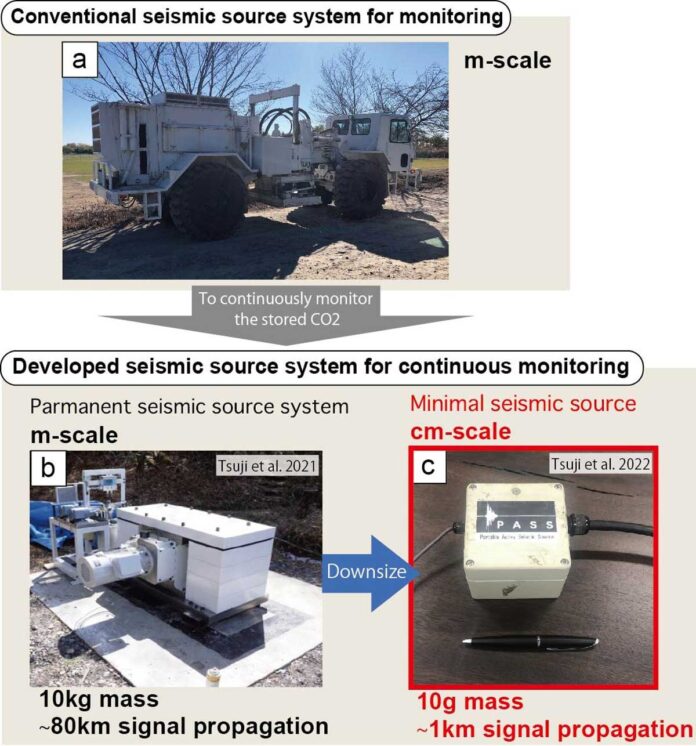Although underground carbon sequestration is a promising approach to combating climate change, significant obstacles must be overcome before this technology can be used on a large scale. A new Japanese study may address one such impediment by determining how to continuously and affordably monitor carbon reservoirs for leaks or other changes that require attention. The study was published in Seismological Research Letters as “4 cm Portable Active Seismic Source (PASS) for Meter- to Kilometer-Scale Imaging and Monitoring of Subsurface Structures.”
Seismic waves generated by earthquakes or man-made sources can be used to monitor underground features such as carbon reservoirs. However, seismic monitoring typically necessitates large, expensive machinery, making continuous monitoring at the scales required for carbon reservoirs both costly and practical.
A team of researchers from The University of Tokyo’s Graduate School of Engineering and Kyushu University’s International Institute for Carbon-Neutral Energy Research developed an ultra-compact, centimeter-scale seismic source that can address this issue by allowing continuous monitoring of carbon reservoirs. The Portable Active Seismic Source (PASS) was originally intended for extraterrestrial applications such as geophysical research on the moon and Mars. However, the PASS has a wide range of potential Earth-based applications.
Professor Takeshi Tsuji, lead author and WPI Principal Investigator, explains, “The vibrations produced by the device are relatively weak due to its small size, but when these vibrations are produced continuously, the resulting signals can be stacked together, allowing transmission over long distances. The signal could be transmitted one kilometre using a four-centimeter motor—the scale required for monitoring carbon dioxide storage strata.”
Because of its small size, the PASS is much less expensive to deploy and operate than conventional seismic sources, which are typically several metres in size. The ultra-compact device is powered by a 12-volt car battery and can even be deployed by drone in inaccessible areas.
The PASS was tested at two different locations, one on a riverbank and one on a tailing’s embankment in a mining area. “The PASS system has great potential for a wide range of scientific and engineering applications, including monitoring for potential disasters such as landslides and volcanoes, and imaging man-made structures such as tunnels, dams, and embankments,” says Professor Tsuji.
The affordability and practicability of continuous subsurface monitoring using this newly developed PASS technology, which allows detection of sudden changes in reservoirs that could lead to CO2 leakage, makes it especially valuable for the development of carbon sequestration projects. This increase in safety may also help to increase public acceptance of these and other geoengineering projects.

